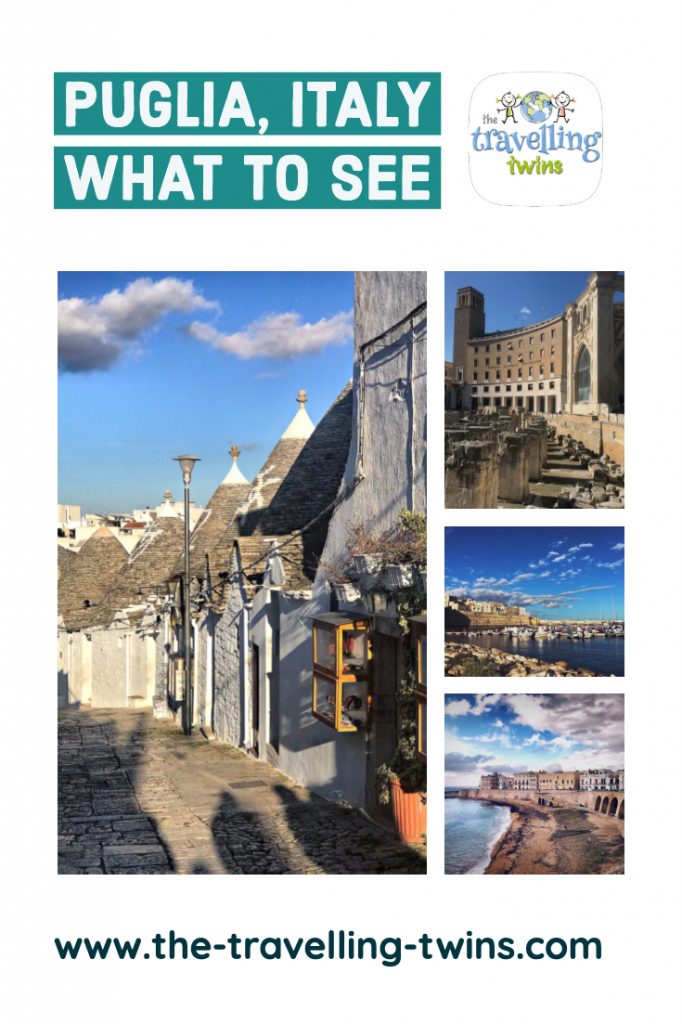
We found ourselves in Puglia almost by chance. We were offered the chance to spend five autumn weeks housesitting down in the tip of Italy’s heel – near where the British food writer Patience Gray had lived and written. We loved it so much we have just arranged to go back in the spring. Following our own explorations, here are some notes about the best places to visit in Puglia.
About Puglia Region
Puglia, or to give the region its English name, Apulia, is a coastal land of mountains, beaches and olive groves in the southeastern tip of Italy, it comprises the Salentine Peninsula, commonly known as the heel of Italy’s boot, and then up to and including the Gargano headland spur which projects into the Adriatic Sea on Italy’s northeastern coast. Puglia region’s coastline is longer than that of any other in mainland Italy.
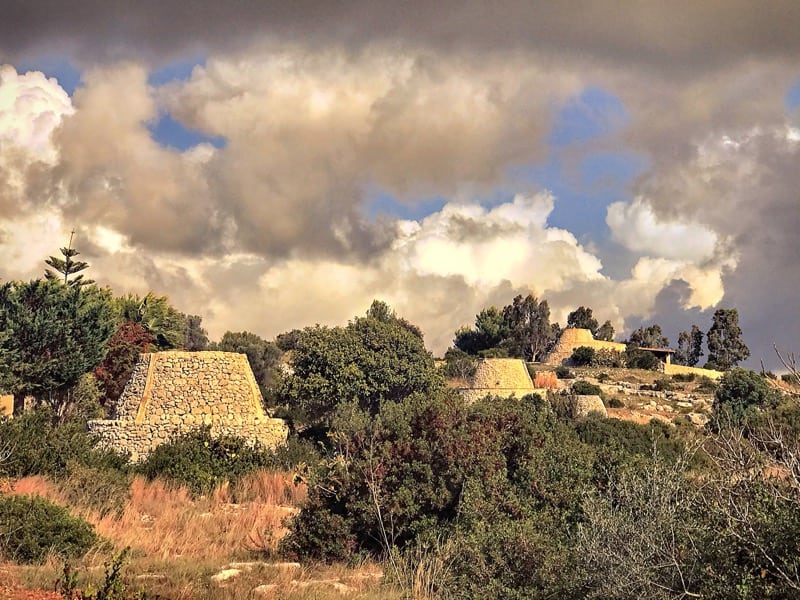
The region includes two national parks – Gargano National Park to the north and Alta Murgia National Park in the west. Besides these, the majority of Apulia is a rolling rocky heathland of blood red soil, outcrops of white limestone, olive groves and small fields surrounded by drystone walls and many containing tiny ancient one room stone dwellings.
Until recently this region of 60million olive trees produced 40% of Italy’s world-famous Olive Oil. Unfortunately the plant bacterium Xylella fastidiosa spread by the spittlebug prevents the trees from taking up water from their roots and they dry out and die of thirst. The first infections of olive trees in Europe by this American bacterium began around Gallipoli in 2013, and now the landscape and local economy are marred by some groves of dying trees. Read more interesting facts about Italy.
Overseeing this beautiful but dying landscape are some beautiful historic towns including Italy’s best kept secret, Lecce, the “Florence of the South”
Climate of Puglia
The climate of the region, just as in most parts of peninsular Italy, is Mediterranean with dry, sunny summers and mild, rainy winters.
History of Puglia
Puglia has been occupied since the Stone Age or earlier. Apart from paleolithic archaeological sites we came across on our cycle rides, one of our neighbours showed us a collection of twenty or more tiny stone arrowheads they had collected on walks. In the last five centuries BC it was colonised by the Greeks, and then by the Romans owing to its position on Mediterranean Sea routes. After the fall of the Roman Empire the area was overrun for four hundred years by various European barbarian tribes. In the ninth century Pugliua again gained strategic importance as the gateway of the Adriatic on the Byzantine sea route between Constantinople (Istanbul) and Venice. Then, from the eleventh century it was occupied and fought over between the French and the Spanish and at one stage the Austro Hungarian empire for eight hundred years until for a few decades in the nineteenth century, Puglia was part of a new independent kingdom alongside Naples and Sicily. With such a rich and varied strategic history it is hardly surprising that Puglia contains so many sites representing different historic cultures.
Map of Puglia – places to visit in Puglia
Places to visit in Puglia
Gargano
Gargano is a historical sub-region in Puglia’s province of Foggia. It consists of a wide mountain massif with numerous peaks and highlands, and forms the spine of the Gargano Promontory projecting into the Adriatic Sea, forming the “spur” on the Italian boot’s ankle.
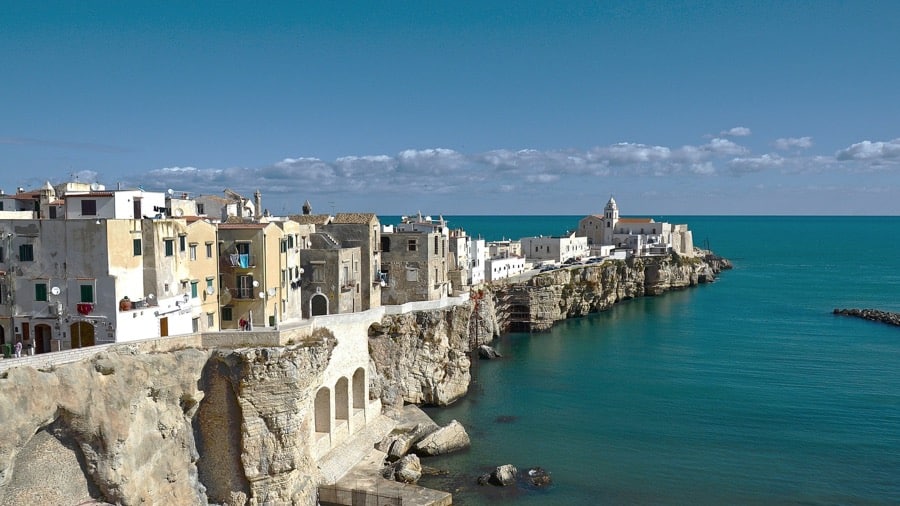
What to see in Gargano
Vico del Gargano: This ancient little town dates back to pre-history. Visitors can wander through the narrow streets of the town, which is compact and quite easy to get around on foot.
- Vesta temple: An 11th-century cathedral was built in Pugliese-Romanesque style by the Normans
- Castello de Peschici: This hilltop castle stands majestically watching over the town’s port. Inside there is a Museum of Torture.
- Roman Amphitheater: This Amphitheater accommodated up to 18,000 people and was built specifically for gladiatorial combat.
- Taverna Al Cantinone: This is a convivial welcoming place established in a deep, vaulted room. You can enjoy some unusual dishes including squid stuffed with pecorino, ricotta, and lime.
- Tomba di Rotari: Several flights of stairs opposite the Santuario de San Michele will lead you up to Tomba de Rotari, a twelfth century baptistty featuring a deep sunken basin.
Cool Place to Eat
- Al Trabucco da Mimi: This family-owned restaurant sits on wooden trestles underneath the Trabucco (a traditional wooden fishing platform). The restaurant serves fresh seafood prepared as you wait, watching as the sun sinks behind Peschici. Wash down the meal with a locally crafted beer to complete the experience.
- Osteria degli Archi: This restaurant puts an innovative spin on Italian flavors and recipes. Their menu includes gossamer-light ravioli stuffed with smoked cheese, tartare of red tuna, mint, and fennel.
Andria
There are numerous stories explaining the history of Andria, but the earliest record of the city dates back to 915 and it obtained its city status in 1046 when it was enlarged and fortified.
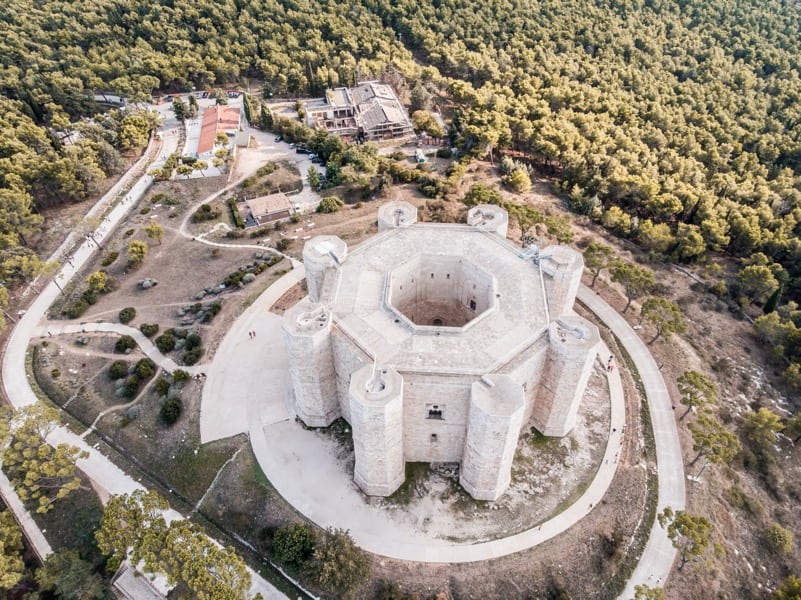
What to See
There are a lot of things to see in this agricultural and winery city.
- Castle del Monte: This breathtaking castle is one of the well-known in Italy and is the major attraction in the city. Located only 20 minutes south of the city, the castle was built in the 13th century by Emperor Fredrick II, and today, it is a UNESCO world heritage site.
- Cattedrale de Santa Maria Assunta: The city’s major place of worship was built in the 12th century and reconstructed in the 14th century in a Baroque style. The west front of the cathedral features a huge window as well as an ornate metal grille that frames the main doors.
- Basilica Santa Maria dei Miracoli: This basilica is located in the Piazza San Pio X and features some sublime interior décor and a sumptuous west front.
- Piazza Catuma: As one of the main squares in Andria, Piazza Catuma is a must-visit if you are in the city at the center of the square is a huge circular ring completed with diagonal decoration. Lining the square are a number of bars, cafés, and restaurants.
Cool place to eat
- Antichi Sapori restaurant: This restaurant is located in a small village called Montegrosso and is perfect for lovers of meats. It is about 20 minutes from Andria.
Alberobello
Trulli date from ancient times, but the oldest examples of these little buildings existing today are in and around Alberobello, and date back to the 14th century. This small town is situated where Italy’s heel meets with its sole and you can wander here for an hour or so up and down narrow streets full of these enchanting buildings.
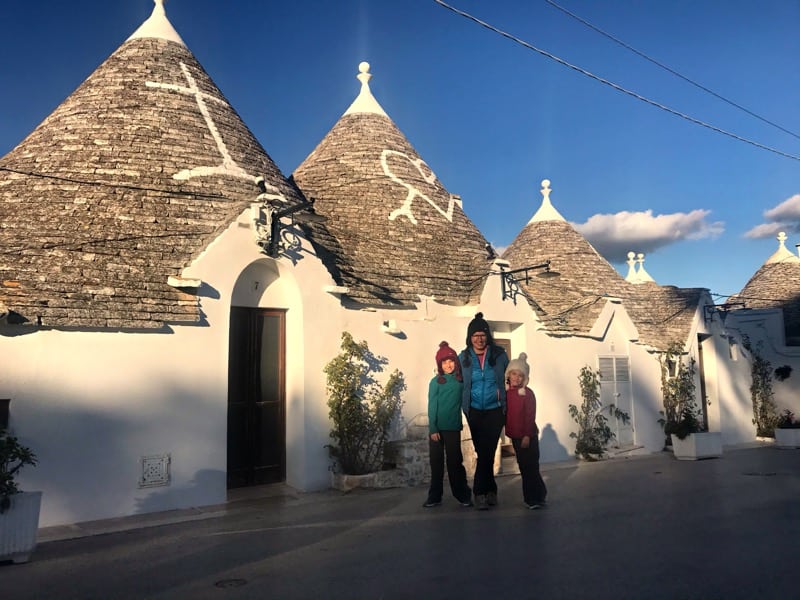
We have been told more than once that Trulli were designed for easy removal of the roof, so that if a tax inspector was spotted in the vicinity, the wily owners could hastily dismantle the roof and deny the existence of a rateable dwelling. These conical roofs comprise two layers of stone: an internal structural dome of corbelled and vaulted rocks, topped by a conical drystone roof of overlapping stone tiles laid with enormous skill and artistry in reducing circles up to a pretty little finial cap. Each roof comprises tens if not hundreds of tons of stones, each one of which is laid with precision and skill. It is difficult to imagine a small structure which would be less suitable for hasty dismantling or easy re-erection!
Trulli today are typically whitewashed and many have mysterious runes and archaic symbols painted on their stone roofs, a tradition dating from the 1950s. Whatever their history and the reasons for it, the effect is completely enchanting and reminiscent of towns built for elves, imps and hobbits.
What to see in Alberobello
When visiting Alberobello:
- Wander the streets looking at the Trulli. Take selfies against the background of these logic-defying Disney-esque fantasy buildings and wonder what historic culture or economy could have justified the building of so many hundreds of them. See them also in Sovrano, Rione Monti, and Aia Piccola.
- Museo del Territorio: Visit this museum to relive the life of the 16th-century peasant families of Puglia.
- Martina Franca: This little village features upmarket and authentic shops. Here, you can try capocollo, the town’s own cured ham.
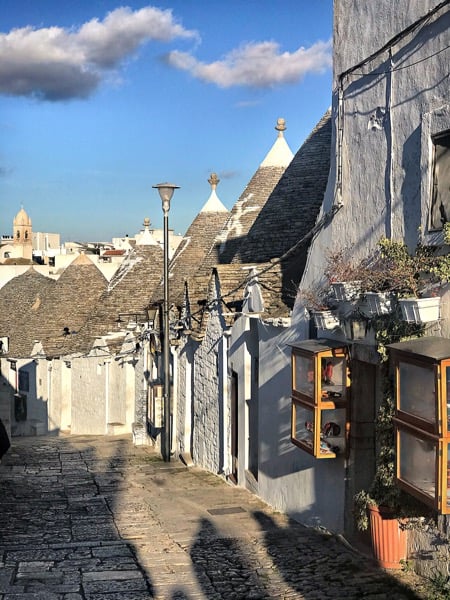
Cool place to eat
- Trattoria Terra Madre: This charming restaurant grows its own ingredients on-site. It is located in a lovely Trullo a few minutes from Piazza Sacramento. They focus on rustic food with locally produced flavor.
- Ristorante La Cantina: It is situated in the cellar of a structure built in the 19th century by renowned Italian architect Antonio Curri.
Monopoli
Monopoli was first settled in 500 BC as a fortified city. The town sits along the Adriatic Coast, 40 kilometers southeast of Bari.
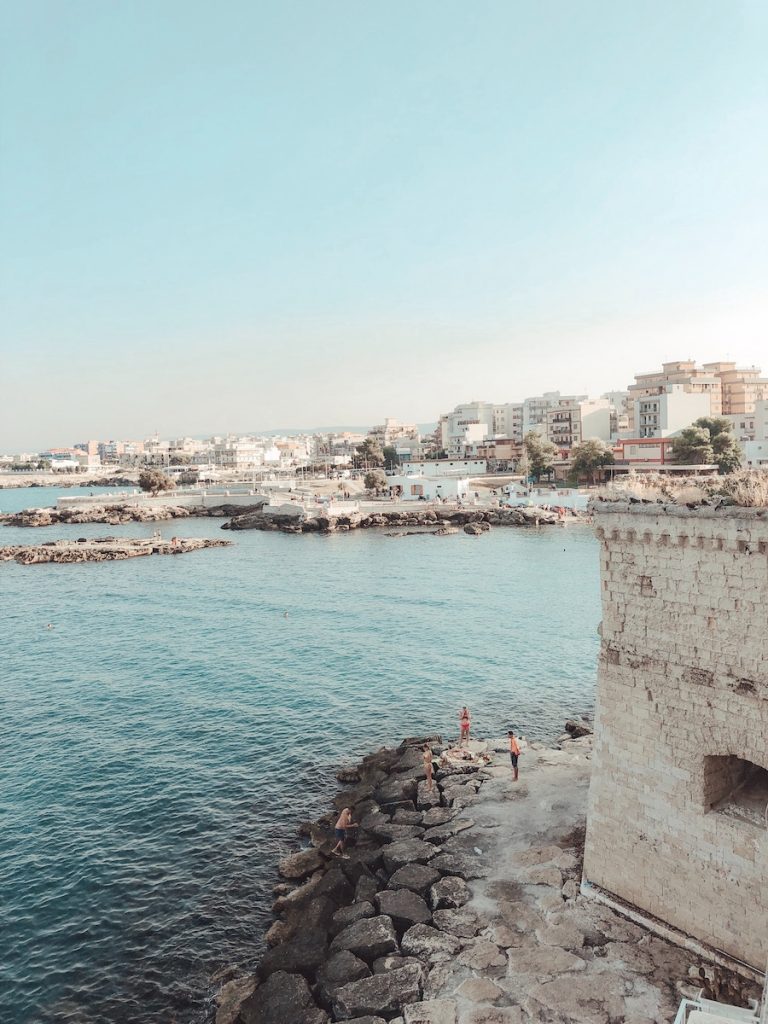
What to see
- Monopoli Cathedral: Also known as the Basilica of Madonna Della Madia, The west front of this church is enriched with lavish finials in some cases apparently balanced precariously on volutes which appear to be in danger of rolling off the gable end. There are also varied arrangements of pilasters and engaged columns with different broken pediments creating a rich mannered composition.
- Castle of Carlo V: Located on the foremost headland bluFF, this castle is a must-visit if you find yourself in Monopoli.
Cool place to eat
- IL Guazzetto: This eatery serves seafood, soups, Mediterranean, vegetarian, and gluten.
- La Lampara Sui Colli
- San Domenico
- La locanda Dei Mercanti
- Braceria Vecchie Storie
Castellana Grotte
Castellana Grotte is a town near Bari and named after the Castellana Cave system (Grotte di Castellana) which has its entrance nearby and extends for 3km underground at a depth of 60m.
What to See
- The Castellana Caves: These karst caves systems have been known for centuries since the centre of the domed roof of the first cave collapsed creating a 60m deep abyss known as the grave. However they were only explored and made accessible in 1938, revealing a space inside 60m deep and 50m wide now lit from above in a scene reminiscent of the Pantheon in Rome. From there, 3km of passages and further caves were explored over the following year and the whole system of caves is now open to the public.
Ostuni
Ostuni is a city and commune in the province of Brindisi, 8 kilometers from the shore. The timeless town sits on a small conical hill and its narrow streets and whitewashed houses form a delightful scene for a half day or evening excursion.
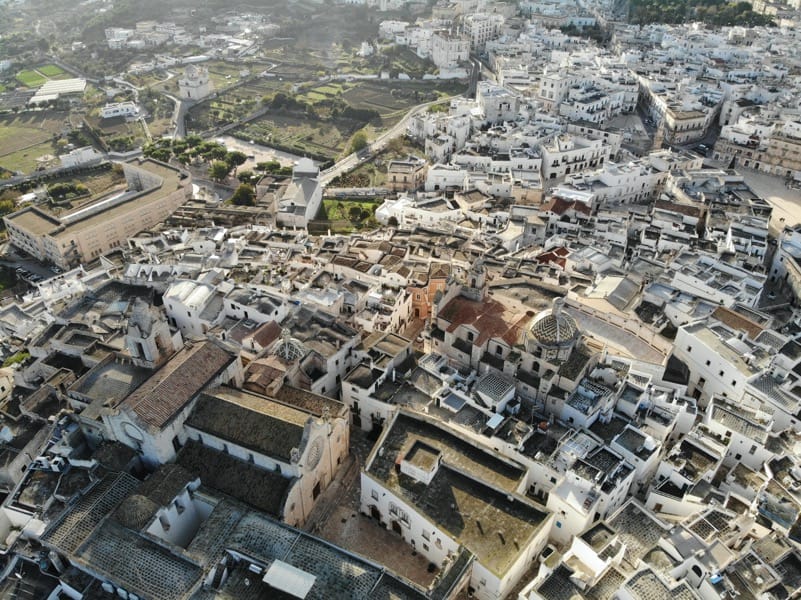
What to see
- The Old Town: Walk around the small alleys and narrow stairs of the Old Town locally known as “The White City.” The white-washed houses are built in a classic Mediterranean style.
- Ostuni Street Market: A great place to buy local products.
- Duomo di Ostuni Cathedral: This is a Roman Catholic Church located in the middle of the town built in the Gothic style.
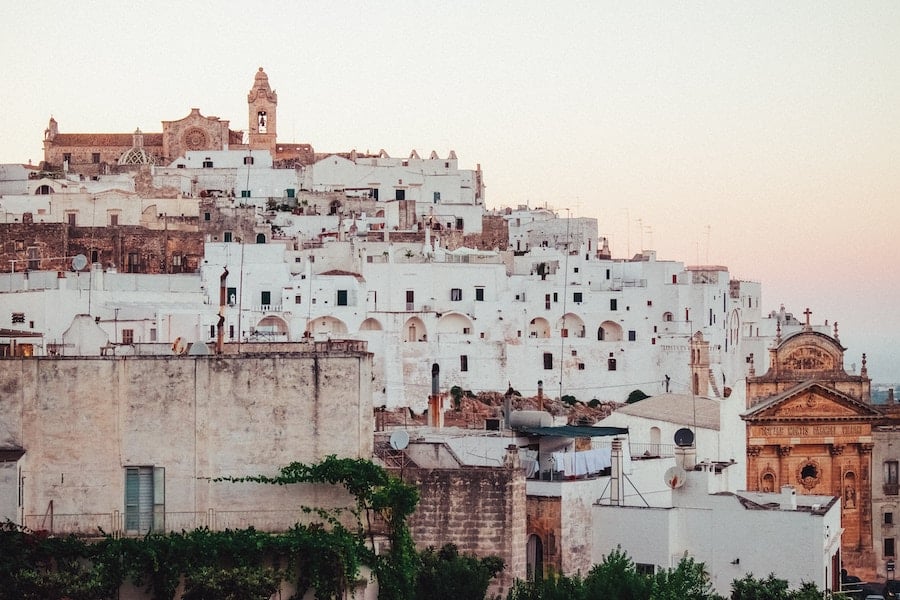
Cool place to eat
- Masseria Il Frantoio
- Masseria Salinola
- Café Cavour
- Monna Lisa Café
- Impasto Napoletano
- Il Fienile
Bari
Bari is the capital of the Puglia region bordering the Adriatic Sea it is both an ancient and a modern port and has been inhabited at least since the second century BC. The pedestrianised city centre streets are bustling with modern shops whilst a short walk away towards the shore you can find the narrow alleys and marble paved squares of the old town.
From Bari you can take ferry to Greece.
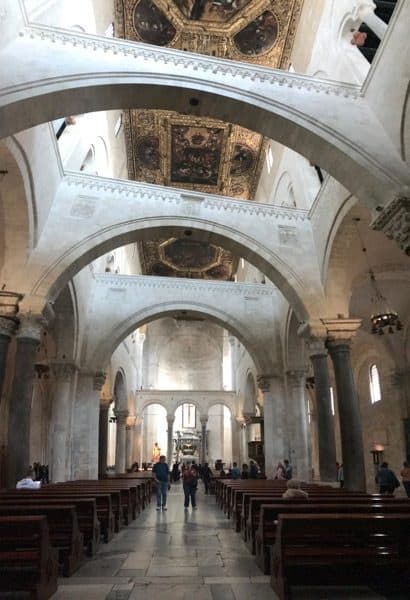
What to see
- The Basilica of San Nicola
- The church of San Sabino
- Bari Castle
- Bari old town
- Lungomare Nazario Sauro
Cool place to eat
- Mamapulia Food & Drink
- Hanami – Torre a Mare
- Hyde Park Café
- Baia Bistrot
- The Stuart, Scottish Pub
Lecce
Lecce, the “Florence of the South” is the capital of Lecce province and one of the largest cities in Puglia. The city is over 2000 years old with a magnificent Roman Amphitheatre, and there are legends connecting Lecce with the Trojan War at the end of the second millennium BC. It is a beautiful town to explore on foot, simply admiring the wonderful sights around every street corner.
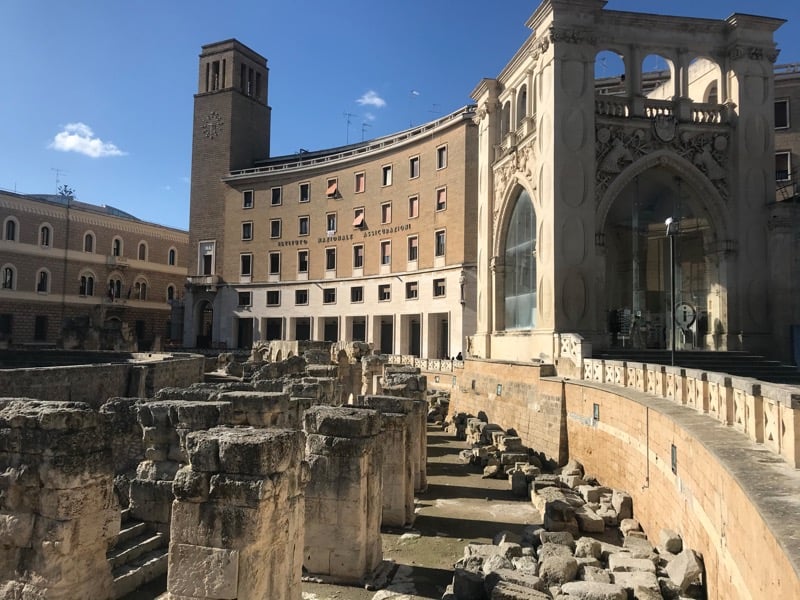
What to see
- Basilica di Santa Croce
- Cattedrale dell’Assunzione Della Virgine
- Piazza del Duomo
- Piazza Sant’Oronzo
- Roman Amphitheater
- Lecce Castello
- Faggiano Museum
Cool place to eat
- Blue Notte
- L’Ostrica Ubriaca
- Corte Dei Pandolfi
- Capriccio Divino
- Mamma Lupa
- Trattoria il Rifugio della Buona Stella
Otranto
Otranto is an ancient port and a pretty modern marina town in the province of Lecce in Puglia. The compact historic centre is a beautiful townscape of levels steps alleys and steep streets to explore, especially in the evening. The city occupies the site of the prehistoric Greek city of Hydrus.
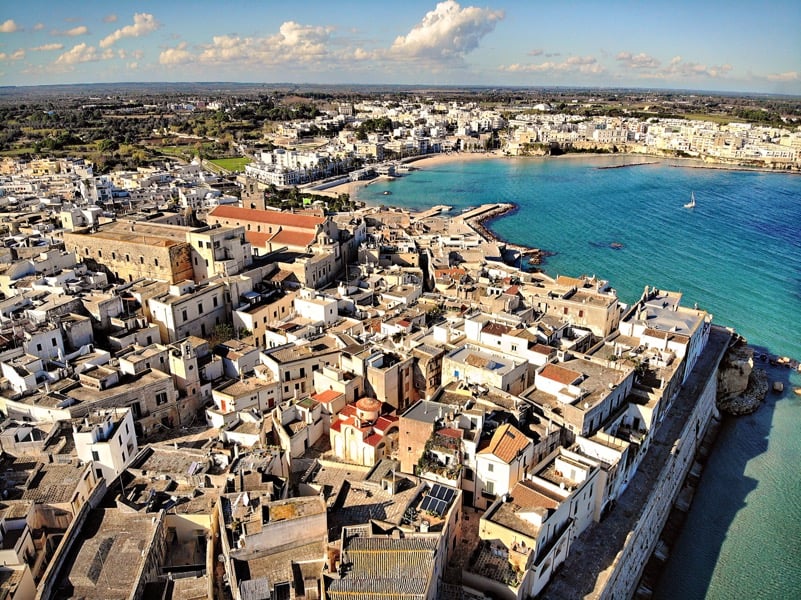
What to see
- Otranto Cathedral
- L’Altro Baffo
- SoFish
- Castello Aragonese Otranto
- Chiesa di San Pietro
- La Bella Idrusa
Gallipoli
Gallipoli is a city in the province of Lecce in southern Italy in Puglia. The old town forms a headland at the end of a long isthmus, and comprises a network of narrow streets and alleys lined with historic courtyard houses, small shops and restaurants. At the centre is the magnificent west end of the basilica Cathedral of St Agatha, facing a street so narrow that one cant stand back far enough to admire the rich carvings which embellish it.
According to legend, the city was founded in ancient times by Indomeneus of Crete.
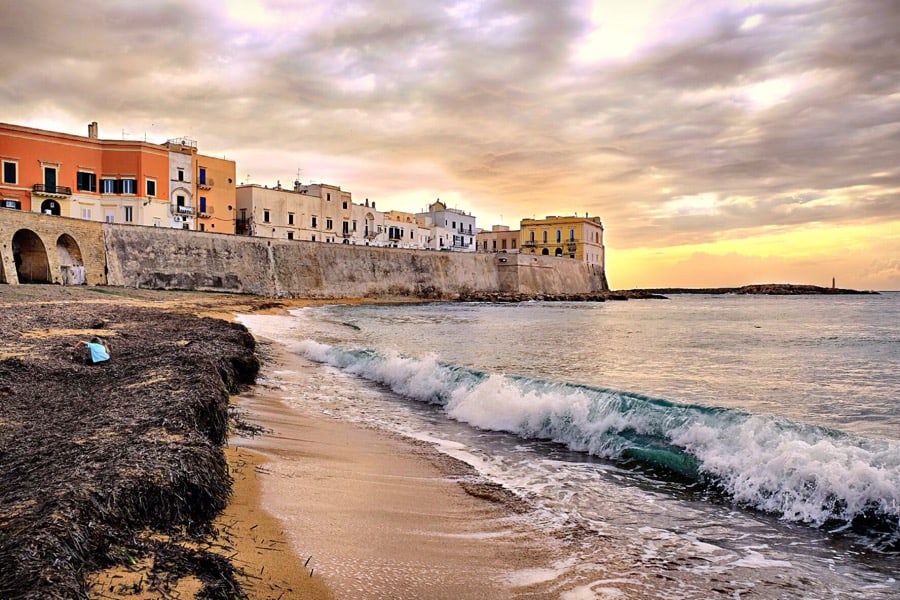
What to see
- Cathedral of St Agatha
- Castle of Gallipoli
- Parco Acquatico
- Lido Punta Della Suina
- Museum Civico E. Barba Gallipoli
- Fontana Greca
- Lido Blue Bay Beach
Cool place to eat
- Ristorante la Vinaigrette
- Osteria Briganti
- Trattoria Rosinella
- L’Angolo Blue
Tricase and Tricase Porto
Tricase is a town in the province of Lecce, Puglia. Judging by the castle and Quercia vallonea, the city of Tricase may date back to 13th century. The Town of Tricase contains the delightful historic Piazza Giuseppe Pisanelli flanked by two impressive churches and a number of cafes and restaurants, however the main attraction of the location is the delightful Tricase Port, approached down a winding cliff road and separated from Tricase city by 4km of open countryside. If you have time, then take the coast road north from the Port, where we parked and left our vehicle to explore several small villages and rocky harbours with clear emerald waters on the way.

What to see
- Piscine naturale di marina Serra
- Piazza Pisanelli
- Quercia vallonea
- Acquaviva Insenatura
- Tricase porto
Cool place to eat
- Lemi
- Locanda del Levante
- Pizzeria Borgo Antico
- La Cistareddha Trattoria
Santa Maria de Castellabate
This Italian town and hamlet is located in the province of Salerno, Campania, in Puglia. The town dates back to the 18th century.
What to see
- Santa Maria de Lucca
- Bar L’Olivastro
- Nascar
- Monte Scoine
- Isolotto de Ogliastra
Cool place to eat
- Da Nello
- Ristorante Bar Le Gatte
- Osteria 1861
Polignano a Mare
Polignano a Mare is a city and comune in the Metropolitan City of Bari, Puglia, southern Italy. Telling by the numerous archaeological excavations, the city may have been settled since prehistoric times.
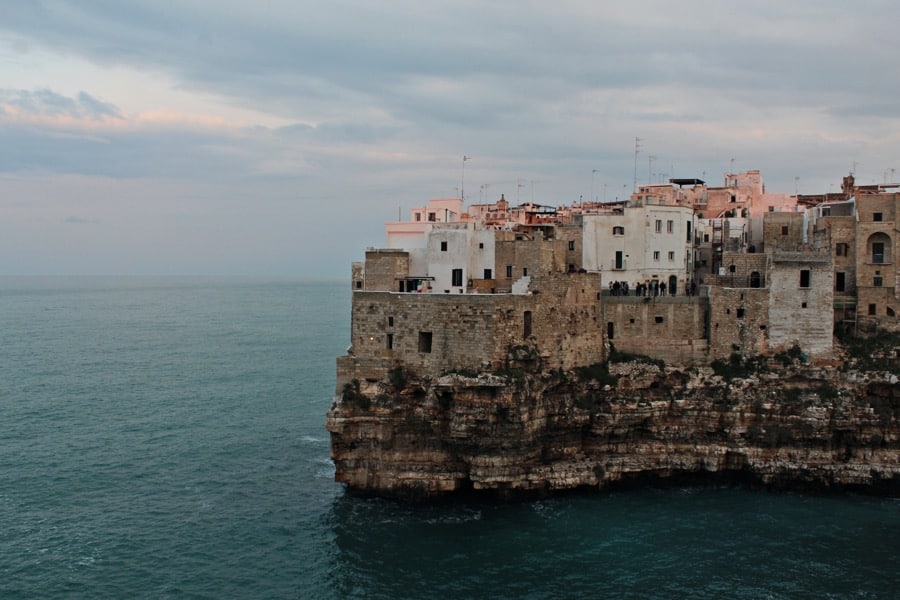
What to see
- Porto Bianco
- Polignano a Mare Beach
- Abbazia de San Vito
- Centro Storico Polignano a Mare
Cool place to eat
- Restaurant Antiche Mura
- Ristorante Meraviglioso
- MINT Cucina Fresca
Isole Tremiti
These archipelagos are located in the Adriatic Sea in the North of the Gargano Peninsula. They make up the province of Foggia and part of the Gargano National Park. It is inhabited since the late Iron Age in the between 4th and 3rd centuries BC.
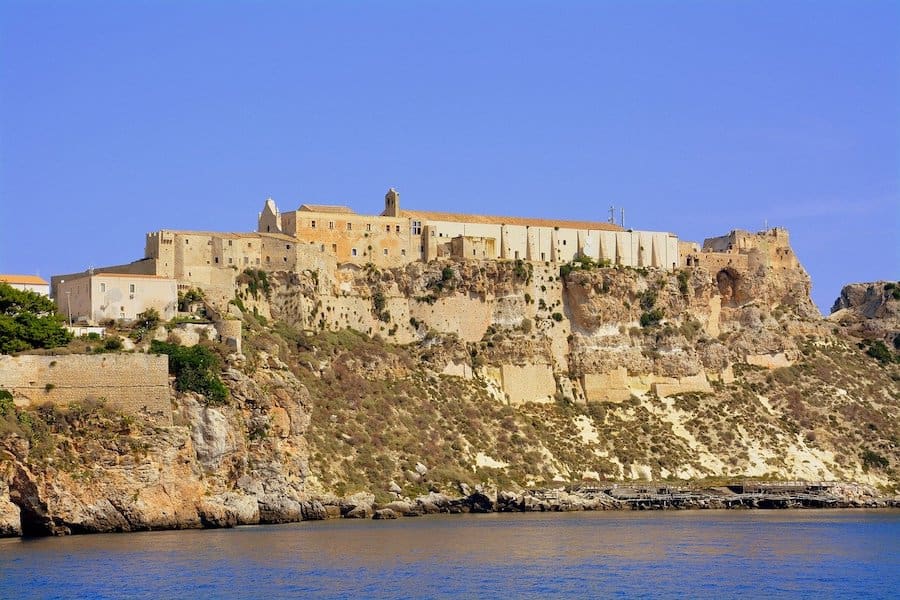
What to see
- San Domino
- San Nicola
- Capraia
- Cretaccio
- Pianosa
Cool place to eat
- Da Pio
- Da Enrichetta
- La Fenice
Itria Valley
The Itria Valley is believed to have been developed since the sixteenth century.
What to see
- Fasano
- Cistermino
- Noci
- Locorotondo
- Martina Franca
- Valle d’Itria
Martina Franca
Martina Franca is a small town in the Province of Taranto. The town has been hosting the annual summer opera festival called Festival Della Valle d’Itria.
What to see
- Basilica de San Martino
- L’Acropoli de Puglia
- Palazzo Ducale
Cool place to eat
- Ristorante Torre di Angelucco
- Ristorante Gabribaldi
- Nausikaa
Conclusion
This region is well known to Italians as a holiday destination and its population during the summer swells enormously. We visited it off season and loved the rustic quiet, cycle rides, windy beaches under beautiful skies, and the historic towns.
Things to see in Apulia – Pin it for later
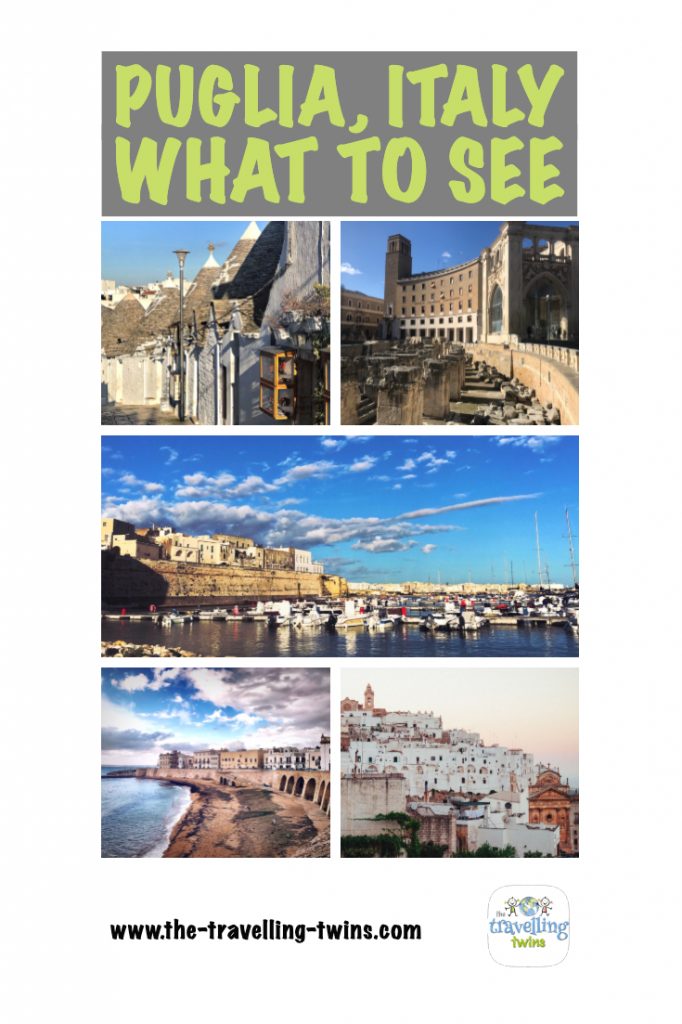
Privacy Policy Disclaimer
This website uses affiliate links for income and support.
If you like our website, please consider using these links. You will be directed to the vendor, and we will get a small commission on your purchase price at no increased cost to you.
We have researched facts stated here as far as practicable but please check anything critical before committing your time and money. We do not claim any special knowledge or expertise, and we are not consultants for our readers.